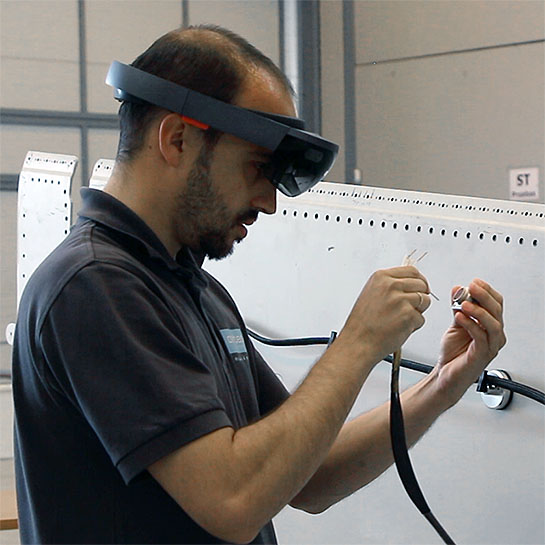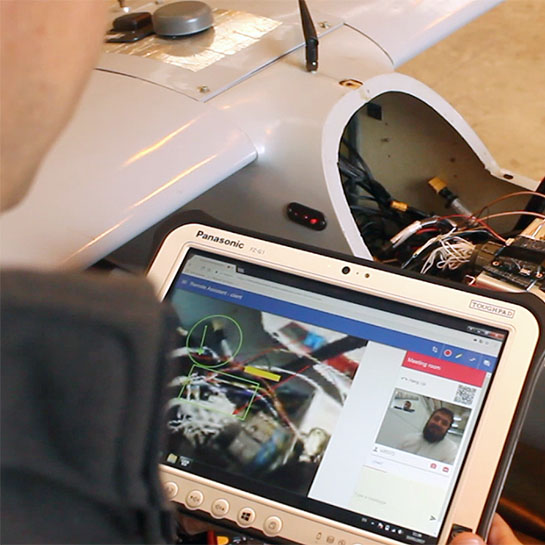Technological developments for engineering
Thanks to our in-depth knowledge of aerospace manufacturing activities, we can improve the application of technological developments in industrial environments.
Our in-depth knowledge of industrialisation and the manufacturing processes in the aerospace industry, combined with our capabilities such as software development engineering, allow us to undertake complex projects in the industrial sector.
We analyse the initial situation and the problems faced by each client with the aim of improving each of their industrial processes; we then propose complete digital solutions.
Working with different technologies allows us to use custom architectures in each case, with the aim of optimising costs and deployment times.
Developing technology that is applied to engineering allows us to optimise processes in a way that is specific to each type of industry, product or work system.
In AERTEC we have implemented specific solutions for different phases of the engineering application process, throughout the life cycle of the aeronautical product:

Design engineering
Model-based systems engineering (MBSE)
In this context, we use this method to design complex systems that are required to perform robustly in critical environments. In these new environments where it is increasingly difficult to conceptualise systems and they are required to integrate seamlessly with other systems, MBSE has numerous advantages as it provides a holistic view of the solution being implemented and it helps to connect systems and subsystems with different functionalities to various architectures and technologies.
By way of an example of its practical application, in AERTEC Solutions we are experts in using MBSE during the earliest stages of system design to demonstrate and validate their functionality through simulations, to anticipate any errors that may be detected in the more cost-effective phases.
Route engineering
ID2 (Industrial Digital Desk)
A multi-device technological environment in which the worker has the option to use the technology that they need in a flexible, customised and dynamic way at any time to perform their tasks (includes remote support and IoT).
Data processing
we develop applications and add-ons in various tools to automate the data stream between applications to minimise the engineer’s iterations, even using data models to automatically generate manufacturing diagrams and verifications.


Test engineering
System for running functional tests
For over 10 years, AERTEC has been developing and deploying software that designs, runs, manages and analyses the ground tests performed on the subsystems and systems integrated into an aircraft.
Through an intuitive and user-friendly interface, these systems enable systems engineers to define the sequence of actions that are automatically launched from the test computers for the aircraft’s computers and they serve to verify the proper operation of the equipment while always maintaining the traceability of the aircraft testing process.
Support engineering
AR/VR tools for troubleshooting
Production support tasks or MRO require optimal effectiveness because, for the duration of the procedure, the aircraft is inactive within the production chain and unable to provide a service for the end client.
In light of these extremely demanding circumstances, we have developed AR/VR-based solutions that allow the engineer to have all of the available information from all possible sources so that they can resolve the technical problem.
In addition to visually aligning different data sources, the system offers the user outstanding flexibility, enabling the data to be presented in an agile and intuitive way.


Remote support
Web solution that allows the person in the field to contact a team of experts and ask them questions through videoconferencing on a tablet or smartphone.
In addition to real-time video and audio, it is possible to exchange all kinds of files and 3D models, take screenshots, record voice notes, etc. with all of the information being stored and linked to that specific troubleshooting, thus making it possible to have a knowledge database which can be referred to if the same problem arises in the future.



